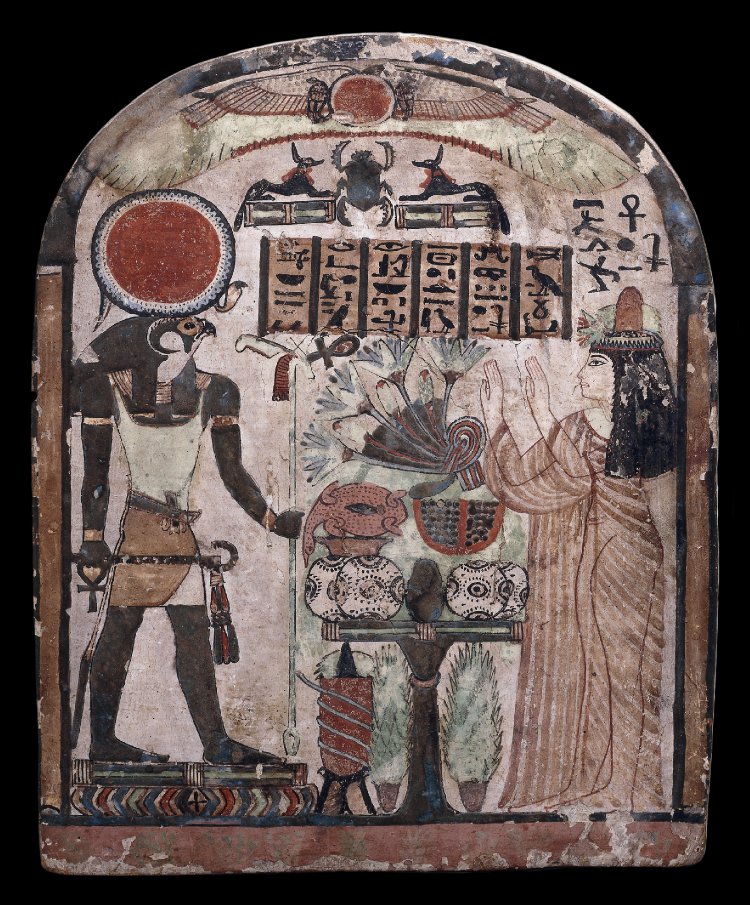This is a wooden stele depicting a woman named Deniuenkhonsu worshipping the deity known as Ra before a table of offerings. Ancient Egyptians believed that Ra was the creator of life on earth, and that he possessed the power to restore the dead to life. The hieroglyphics on the piece describe how Ra travelled through the Underworld, defeating the forces of chaos and bringing new life to the dead who lay at rest there. The fact that this is a stand alone piece, rather than a part of a larger work, means that this is an event that people would be able to recognize. Line is used in various ways throughout the piece, such as emulating texture in the woman’s robe, the flowers as well as the wings surrounding the sundial. There is a very prominent line used to outline the border of the work, possibly used to fragment the piece from others and cause a storyboard or comic book effect. There is very little negative space in the work overall, however there is noticeably more negative space around Ra. This is to show the importance of Ra, as any imagery directly around him would be distracting from his image. This is further emphasized with Ra standing on a pedestal, causing him to stand taller than Deniuenkhonsu. The colours used in this artwork are mainly various shades of reds, browns and yellows with a few parts of green. The choice of medium plays an important role in the presentation of this piece, because the use of pigment allows the artist to portray a more realistic and detailed image. There is lots of symmetry present in the work, particularly with sun dial and Anubis in the upper region of the artwork. The artwork feels balanced and well organized, however the hieroglyphics are offset because of the disproportion of Ra’s size compared to Deniuenkhonsu. The addition of Ra holding various sceptres and the cobra-encircled sun disk above his head help create a strong religious tone in the artwork, and also evoke a sense of power and divinity when looking at Ra. The artwork is currently not on display; it was last exhibited in 2013 at the Western Australian Museum in Perth, Australia. It has a height of 33 centimetres and a width of 27 centimetres and is made of painted sycomore fig wood. It was made around 950-900 BCE and was excavated from Thebes, Egypt in 1896. It was a funerary stele made for a Woman named Deniuenkhonsu, who was a musician of Amun and the wife of Ankhkhonsu (a priest of Mentu).
